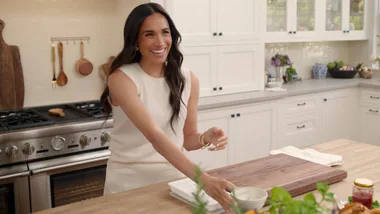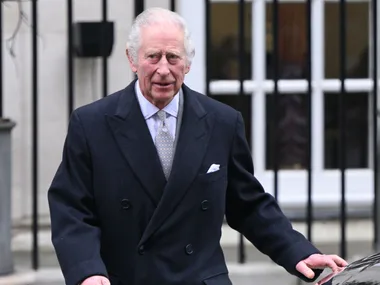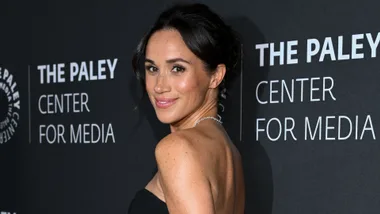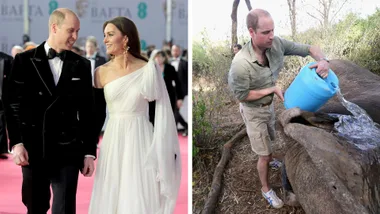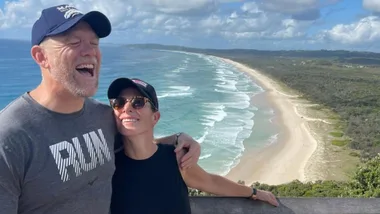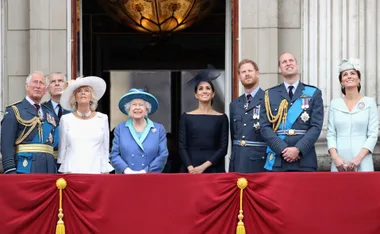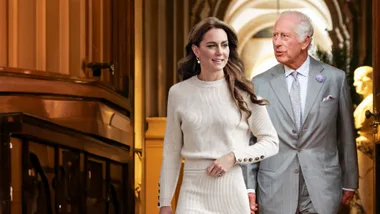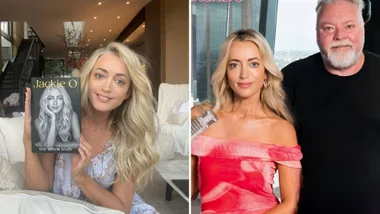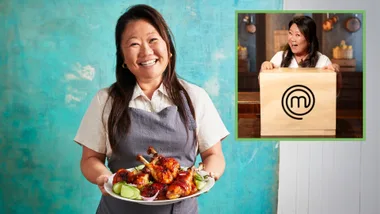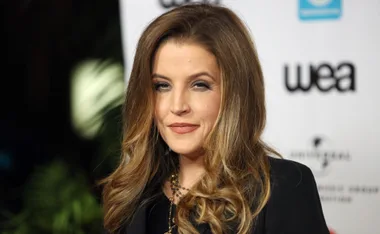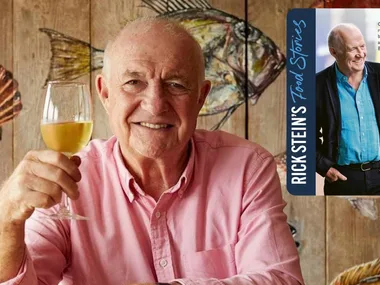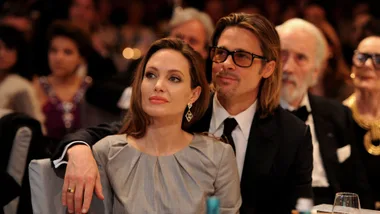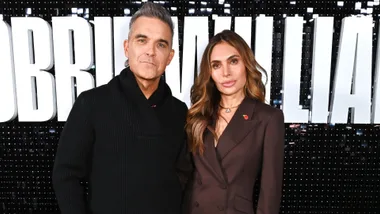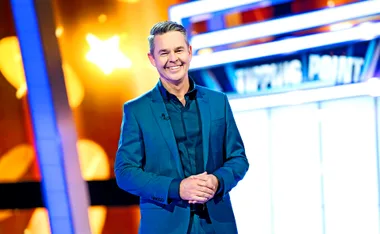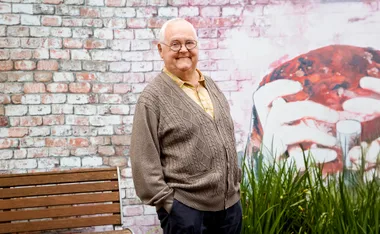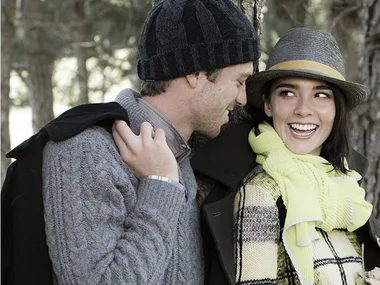Author Helen Brown recalls the day her doctor told her she would need a mastectomy in this extract from her new book.
It’s hard to write about what happened that night except to say it’s one of the strangest events of my life. I’ve never been particularly psychic, and yet…
Before dawn I woke to the sound of wooden blinds slapping against the window. Rolling over to find a more comfortable position, I became aware of a human figure sitting in a chair across the room. It was — of all people — Mum.
My chest melted at the sight of her. Even though she’d died several years earlier, she seemed very much alive, her eyes blazing with love as she looked at me.
In front of her a black cat kept zigzagging across the room, moving too fast for me to figure out if it was Cleo.
Aware this encounter with Mum might be short, I seized the chance to ask her some questions.
“Is there a God?” I asked, feeling sheepish for being so unoriginal.
“Yes,” Mum replied matter-of-factly.
“Have you met him?”
“No,” she answered, with a tinge of regret.
“I miss you so much!” I cried, overwhelmed by a sudden sense of loss. She began shimmering around the edges, her body melting away in the chair.
“What should I know?” I cried, desperate that she was going to disappear.
“Good comes from good,” she replied before smiling enigmatically and vanishing.
Last thing I saw was the cat’s tail melting into the shadows.
Philip has a surprisingly open mind for someone who works in a concrete tower. “Was it a dream?” he asked after I recounted my experience the previous night.
It’d felt more real than a dream but that was all I could call it.
“What do you think it meant?” he asked.
“Maybe it’s about the book,” I said. “I think Mum was saying it could do some good — not just for me, but for other people. There was something really urgent about it, too. Mum and Cleo were telling me to hurry up and finish it. They don’t want me to waste time.”
The prospect of running out of time hadn’t occurred to me before. It was something I was about to confront.
Winter was creeping in — the trees had shaken off the last of their leaves and stood shivering in their underwear against the pale blue sky.
I’d booked in a while before to have a routine two-yearly mammogram, but the appointment had drifted to the bottom of my priority list and I’d lifted the phone a couple of times to cancel.
Now I was back working on my book about Cleo and worrying myself to distraction over Lydia going to Sri Lanka there didn’t feel like time for hypochondriac check-ups.
Anyway, the young doctor who’d done a breast examination a couple of months earlier had said everything was fine and I didn’t really need a referral to a breast clinic.
I was about to acquiesce to her advice, something stopped me. Instinct, maybe. Or one of the mood swings women my age is famous for. Besides, if I didn’t have the mammogram now I’d just end up having to do it later.
After scanning the magazines in the waiting room, I was summoned by the radiographer.
“Relax,” she said as she lined me up for the mammogram. “Stand naturally. Put your shoulder down. Relax. (Couldn’t she stop saying that word?) Move forward. Hold that handle. That’s it. Relax,” she said, flattening my right boob between the equivalent of two paving slabs and running a garbage truck over them.
“Take a breath. Don’t move. Now hold.”
After repeating this three times she came back after five minutes saying the images were under exposed and we’d have to do them again. After she’d finished crushing my boob again, she shepherded me into the ultrasound room.
Related: I was abused by my husband for more than 20 years
The ultrasound woman spread warm goo over my boobs and ran her scanner over them talking incessantly all the while.
After finishing, she wiped the goo off my breasts with paper tissues, helped me into a towelling robe and sent me off to sit in a vestibule.
I’m not a fan of confined spaces. After thumbing through home décor magazines for a while, unease closed in until a radiologist in a white coat finally appeared.
“Oh there you are!” she said, escorting me out of the vestibule and through a door labelled Assessment Room.
There she showed me ultrasound images of my right breast which showed dozens of white blobs swirling like stars through the Milky Way.
These were calcification, she explained, and were possibly an indication of irregularities in the cells. Careful language.
The radiologist made an appointment for me to see a surgeon and have a biopsy the following afternoon. She suggested I bring a support person.
Am I dying? I thought, suddenly numb to the core.
My fingers trembled as I punched Philip’s number into my phone. His voice was light and tender as he assured me that of course he’d be my support person tomorrow.
After we’d talked more and hung up I sat in my car for a while, in a daze. Only minutes had passed but I was already imagining how my family would cope without me.
I knew there was one person who would understand what I was going through — my oldest son Rob.
Rob and I had faced so much together [Helen’s son Sam, Rob’s brother, died in an accident when he was just nine]. We’d grieved in different ways for Sam and in some ways still were.
We’d found distraction and delight together in Cleo, the black cat who’d remained a living connection with Sam for nearly a quarter of a century.
Having suffered ulcerative colitis and having his colon surgically removed at the age of twenty-four, Rob knew exactly how it felt to be alone and frightened inside your own skin.
When Rob answered his phone and heard my news the emotional connection was immediate.
His words were cautious, but I could tell he was living and breathing it with me. We both understood that the clinic was drip-feeding information to prepare us for the worst when the test results came in tomorrow.
“It’s nowhere near as bad as what you went through,” I said. For the first time since the ominous mention of irregular cells, I was back inside my body being honest.
Clicking the phone off a while later, I felt surprisingly serene. Talking to Rob had put things into perspective.
Even if it was worst-case scenario and I was about to choose music for my funeral, it didn’t seem too terrible in the scheme of things.
Losing Sam had been far more harrowing. A life snuffed out before it’s barely begun. That’s tragedy.
The next day, a cheerful woman called my name and Philip followed me into the surgeon’s office.
Lined with pale wood, it was a pleasant room with brochures about handling emotions. A regulation box of tissues sat on the desk.
“How did this happen?” the surgeon asked me in a tone that was alarmingly tender as we peered at images of the swirling planetary system inside my right breast.
The nature of her question was unnerving. I’d eavesdropped on enough doctors to know they have a good idea what’s wrong long before they tell you anything.
“What’s your feeling?” I asked.
“I think it’s malignant.” Her sentence smashed across the room like a crate of empty bottles.
“But I haven’t got time to be sick,” I told her. “I’m writing a book.”
She smiled wryly. There was far too much knowledge in her eyes.
“Brave” and “positive” are words associated with people in this situation. I could summon up neither. I simply wanted to implode quietly in the corner.
“The growth is large,” she continued gently. “It’s spread across the breast.” “Mastectomy?” I asked.
“Yes,” she answered.
When I asked about the possibility of a lumpectomy she said it was impossible considering the size of the growth. Performing a lumpectomy would mean taking the whole breast anyway.
“And the other breast?” “Possibly it will have to go, too. We won’t be sure until the biopsy and MRI results are through.”
“Do you think I’m going to . . . ?”
“You’ve had enough information to absorb for one day,” she said. “Let’s hope I’m wrong and the growth’s harmless.”
As we left, the clinic nurse handed me a psychologist’s business card. A shrink? Hell no, I thought, but slipped the card in my handbag anyway.
In the biopsy room a man handled my breast with what looked like a miniature ditch-digger with a staple gun attached.
The local anaesthetic had little effect. His gun discharged four painful shots before he was satisfied he had a sample of the offending tissue.
Related: One woman, 20 personalities
Outside the clinic, beside the car, I wept into Philip’s neck. I’d encountered death before — my son, both parents and various friends. But I wasn’t ready to clasp its bony claw just yet.
The concept of dying was okay, providing it was relatively painless. What I couldn’t face was the prospect of leaving my husband and kids.
Edited extract from After Cleo, Came Jonah: How a crazy kitten and a rebelling daughter turned out to be blessings in disguise, by Helen Brown, published by Allen & Unwin, April, $27.99.
Newsletter conversion description. Get the latest in your inbox.





.jpg?resize=380%2C285)
